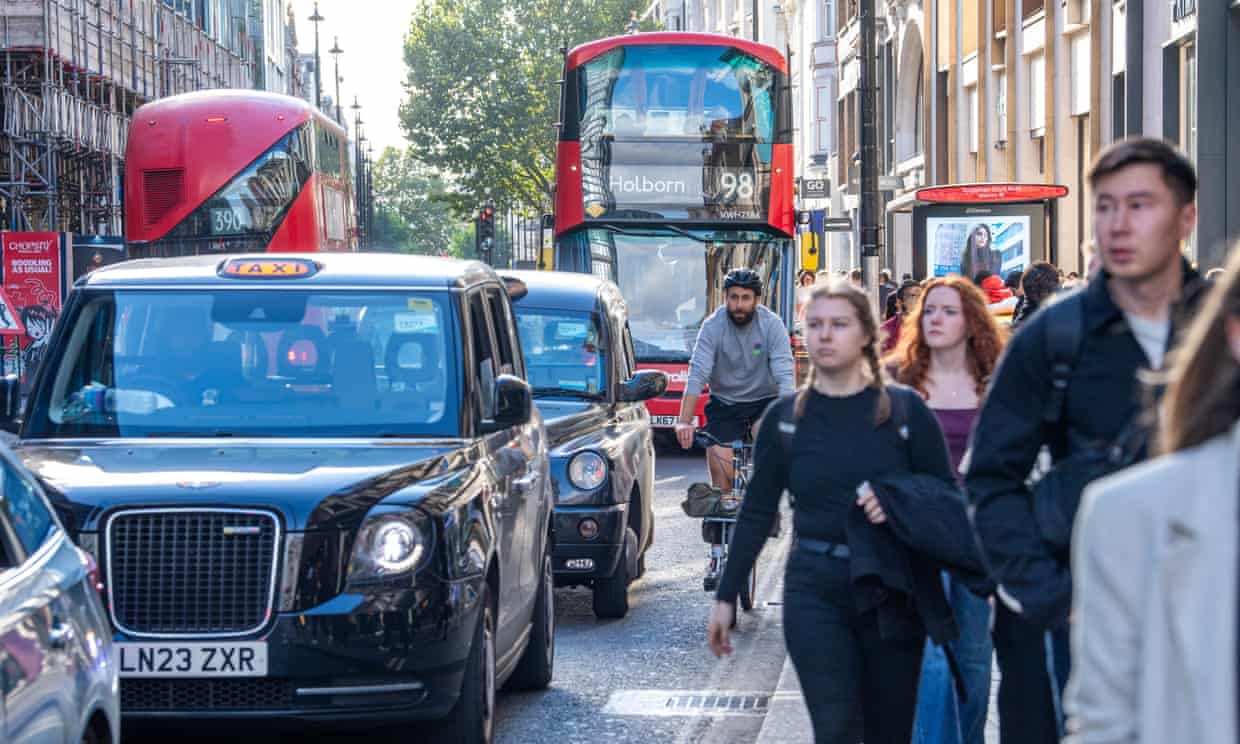Calls to transform one of Britain’s most well-known thoroughfares into a pedestrian-only zone have garnered powerful new backing. Following the recent opening of Ikea’s inaugural branch on Oxford Street, Peter Jekelby, the retailer’s UK chief, has publicly expressed his support for the initiative, suggesting that prohibiting vehicles would enhance the street’s appeal.
Sadiq Khan, the Mayor of London, has been advocating for the pedestrianisation of the renowned West End shopping area since his initial campaign for mayor in 2016. He is now renewing his efforts by requesting the government to grant him additional authority to advance these plans. The protracted struggle over restricting vehicle access on this less-than-a-mile stretch of road is reflective of broader trends seen in cities globally, where proposals for pedestrianising urban areas often encounter similar pushback before eventually being celebrated as triumphs after much debate.
For example, the successful pedestrianisation of George Street in Sydney’s central business district has led to an increase in commercial property values. The prohibition of vehicles in Pontevedra’s historic center in northern Spain has resulted in a significant reduction of road fatalities. Likewise, converting Brussels’ Boulevard Anspach to a car-free zone has boosted foot traffic and supported independent businesses. Even the transformation of a six-lane motorway in Seoul into an 11km riverside park, which previously accommodated 160,000 vehicles daily, has successfully decreased air pollution by 35%.
While the benefits of pedestrianisation are considerable, local political dynamics must first be navigated for shoppers on Oxford Street to reap these rewards. The Labour Party has held sway over the historically Conservative Westminster Council since 2022; however, with the political landscape shifting nationally, there is a risk that small groups of constituents could compel the council back into Conservative hands unless their traffic-related concerns are addressed.
“Residents have long been worried about cut-through traffic,” a council representative stated, noting that there is apprehension that limiting vehicle access on Oxford Street might lead to an influx of cars in surrounding streets. Yet, similar concerns have been raised previously and subsequently disproven. Many predicted that establishing low-traffic neighbourhoods would exacerbate congestion on perimeter roads, but studies by the University of Westminster across 174 locations found minimal increases in boundary traffic and notable reductions in 46 designated zones.
In fact, as more roads transition to pedestrian-only or vehicle-restricted, fewer individuals opt for unnecessary car trips. Paul Lecroart, a senior urban planner in the Paris metropolitan area, cites research from 60 cities indicating that removing lanes from inner city highways can lower vehicle usage by 14% without worsening traffic conditions.
Interestingly, despite a significant portion of residents in Westminster not owning cars, one-quarter of the area is designated for road use—more than what is allocated for green spaces and twice that for housing. Therefore, even with Oxford Street’s closure, the notion that central London drivers would be deprived is simply unfounded.
The political gridlock has been compounded by an unusual hierarchy in the capital. Unlike many other cities, London’s mayor—who is responsible to millions—generally lacks the authority to spearhead major initiatives as local councils do. While ward councillors certainly should contribute to decisions impacting their communities, Oxford Street transcends local significance; it is an essential regional asset with potential nationwide implications. Only about 43,000 people voted in the most recent borough elections, a mere fraction of the half a million visitors who frequent Oxford Street daily. It is unreasonable for a small number of affluent drivers in a central London constituency to leverage their privilege to obstruct initiatives that could enhance the experience of millions.
Car dominance over pedestrians is not exclusive to London; in Birmingham, rampant illegal pavement parking has forced the city to install a series of bollards to protect pedestrian zones. Many of Britain’s attractive market squares, which in Europe would be vibrant civic hubs, have been relegated to mere parking lots, as seen in Chipping Norton, King’s Lynn, and Bury St Edmunds.
History repeatedly demonstrates that pedestrianisation can revitalize urban environments, yet no volume of data, scholarly research, or positive case studies seems sufficient to sway skeptics. Even after the successful pedestrianisation of the north side of Trafalgar Square and the removal of parking from Somerset House’s central courtyard—both significant urban planning achievements in Westminster—skepticism lingers.
Fortunately, a shift may be on the horizon. In Leeds, a newly developed neighbourhood by property firm Citu has prioritized pedestrian access. “It requires courage to move away from decades of car-centric planning,” Managing Director Jonathan Wilson explains. “We prioritize people—pedestrians—because it is sound socially, environmentally, and, when executed correctly, economically.” By focusing on pedestrian needs, they have fostered community integration and constructed more housing than a traditional car-centric development would have allowed.
For the moment, the optimal time to shop on Oxford Street appears to coincide with ongoing protests. When Extinction Rebellion obstructed Oxford Circus with their well-known pink boat in 2019, a surge of liberated shoppers took to the full width of the street, creating a festive atmosphere for several days while halting traffic. If Khan is finally granted the authority to fulfill his promised commitment to Londoners made back in 2016, it won’t require mass demonstrations to enhance the shopping experience on Europe’s busiest thoroughfare.
Phineas Harper is a writer and curator.

